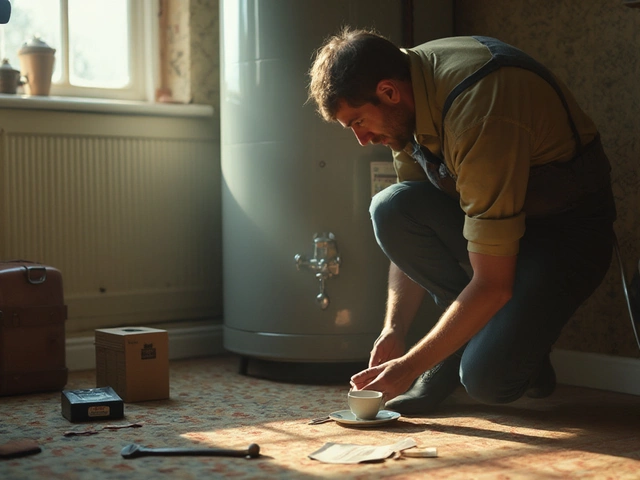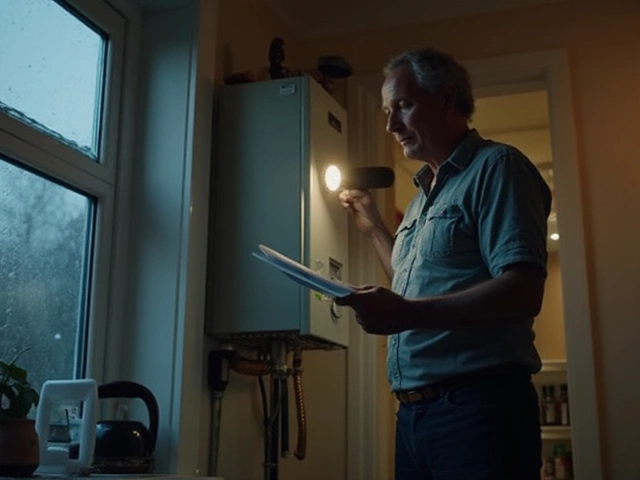Isn’t it wild how one little appliance can throw off your entire daily routine? A microwave goes down, and suddenly reheating last night’s pizza feels like a marathon. Before you jump to replacing it or calling in a professional, it’s totally possible to tackle some common microwave problems yourself—no fancy skills, just a little patience, basic tools, and the willingness to unplug (literally and figuratively) for a bit. Microwaves are surprisingly sturdy, and with good safety habits, you can bring yours back from the brink. Let’s talk about exactly what you can check—and fix—right in your own kitchen, without biting off more than you can chew.
Common Microwave Problems and Why They Happen
If you think your microwave is just being unnecessarily dramatic, you’re not alone. Before I owned my dog Max, I thought cooking was just for the stove. Then I realized microwaves are the perfect fix for 90% of my hungry moments. The most typical issues fall into a handful of categories. One of the big culprits? The microwave won’t turn on. Bizarre buzzing, a spinning plate that suddenly prefers to nap, or a lightbulb that’s now just decorative—these aren’t rare.
So, what’s really going on? Often, microwave fails start with the basics: a blown fuse (which is more common than you’d think), a door not closing fully, or a faulty power outlet. According to the latest data from the U.S. Appliance Repair Association, over microwave repair callouts each year are due to blown internal fuses or bad door switches. Let’s be blunt: half the time, someone bumped the door a little too enthusiastically, which throws off a surprisingly touchy safety system inside. If the microwave turns on but doesn’t heat, the magnetron might be busted—this is the part that actually cooks your food. That sounds big, but hang on. Sometimes, it’s just because the ‘child lock’ feature is engaged, which is literally two button presses away from a fix.
Ever had the microwave sound like there’s a tiny drummer inside? That’s probably the turntable motor protesting, or the roller ring under the plate is out of place. There’s even a funny one—static electricity build-up can zap delicate internal circuits. Hand me the oven mitts and a screwdriver, because, hey, there are a lot of ways microwaves try to test us.
Let’s lay out a few typical microwave fails and top causes in a table for quick reference:
| Issue | Usual Cause |
|---|---|
| Microwave won't turn on | Blown fuse, faulty door switch, outlet issue |
| Microwave runs, doesn't heat | Magnetron failure, high voltage diode, child lock on |
| Noisy operation | Turntable problem, misaligned roller ring, faulty fan |
| Plate not spinning | Broken coupler or motor, food debris blockage |
| Sparks or burning smell | Metal in microwave, damaged waveguide cover |
One cool fact? Most microwave door latches actually have three switches inside, and if even one fails, you’re out of luck. That’s why slamming the door or a buildup of crumbs can throw off the whole unit. The more you know, the less mysterious those random microwave woes seem.
Safety First: What You Should Never Ignore
Look, I know those TikTok hacks where someone fixes a microwave with a potato or a can of soda are hilarious, but safety with microwaves is no joke. The inside of a microwave holds onto thousands of volts of electricity—even when unplugged. That’s thanks to the capacitor, basically a giant battery storing enough juice to give a serious shock. So, every step, start by unplugging the unit. Seriously, don’t skip this. I keep Max (my loyal fur-guard) in another room any time tools are out. For extra safety, check that you’re working on a non-metallic surface, and wear thick rubber-soled shoes.
Don’t ever go poking around inside the metal cavity where the magnetron lives. Even if you’re feeling brave, some repairs—like swapping out a magnetron or discharging the capacitor—should be left for pros. If you smell burning plastic, or see actual flames, unplug and get out. That’s not a fixable-at-home moment; it’s a replacement or professional repair job. Don’t get experimental if there’s a weird chemical smell or you notice rust inside; leaks and arc damage can let microwaves escape, and that’s not something to mess with. According to Consumer Reports, faulty attempts at DIY fixes hospitalize over 500 people annually in the U.S.—that’s a stat nobody wants to join.
Here’s the checklist I stick by before even reaching for the screwdriver:
- Unplug the microwave from the wall.
- Wait a few minutes, letting residual electricity dissipate.
- Work in a dry, well-lit space, preferably not near water sources.
- Have a voltage tester handy if you ever need to check wiring (most folks honestly don’t need this, but it’s handy to be aware).
- If you open the cover and see anything melted, burnt, or rusted, stop and consult a professional.
If you ever see sparks, especially while in use, stop immediately. There’s a legendary quote from repair expert David Gray, author of "Safe Appliance Repairs," who says:
"The only thing riskier than ignoring microwave safety is thinking a little ‘DIY bravado’ can outsmart high-voltage electricity. Always disconnect, always respect the circuit."
So don’t be a hero where you don’t need to be—knowing your boundaries is part of the fix-it game.

Step-by-Step Guide: Fixing Your Microwave at Home
If you’ve made it this far, you’re probably itching to try a fix yourself. Here’s a straightforward rundown of the most common troubleshooting and repair steps for home microwaves. If your model’s manual is still lurking in some random junk drawer, now’s the time to dig it out. Every model has its own quirks, but most fixable problems are pretty similar.
- Microwave won’t start
Double-check the basics: Is it plugged in, and is the circuit breaker okay? Try plugging another appliance into the outlet to see if it’s live. Next, check the door—does it close with a real click? Wipe down the seal; a stray crumb can stop it. - No heating
If the turntable spins, lights come on, but the food stays cold, test with a microwave-safe cup of water. Run for a minute—if it’s cold, your magnetron or diode could be done for. Sometimes, the problem is actually the sensor or a stuck relay. Reset the child lock or unplug for 10 minutes (a hard reset). If there’s still no heat, this is where most folks tap out. - Strange noises
Remove the glass tray and roller ring; check for crumbs or gunk jammed under. Wipe everything down and inspect the turntable coupler (that little nub in the middle). Sometimes, these snap and need swapping; they sell for $5–15 online. Popping or sparking? Check for leftover foil or metal, even hidden under the plate. - No light inside
This is minor but irritating. Unplug, unscrew the outer cover (usually Phillips screws on the back); the bulb will be housed in a little plastic holder. You can get a replacement from any hardware store. Wear gloves to avoid burning your fingers or smearing oil onto a new bulb. - Plate not spinning
Check the drive shaft and roller ring for cracks. Replace if necessary. If the motor underneath is dead, that’s a trickier fix but still doable—get a replacement part matching your model, unscrew the bottom panel, and swap it. Just double-check all connections before reassembling.
One underrated fix? Give everything a proper clean—sticky splatters can gum up buttons, block sensors, or even create tiny short circuits that cause weird glitches. It’s amazing how many issues disappear with a little effort and soapy water.
If you get stumped, search YouTube for your brand and issue; repair videos from real appliance techs can be a lifesaver. Models differ a bit, but the basics apply everywhere—and community forums are treasure troves of solutions.
When to Call in a Pro and How to Prevent Trouble
Here’s the honest truth: some microwave problems just won’t quit with basic fixes. If you hear a faint buzzing from inside and the heating’s gone, the magnetron or high voltage capacitor is likely dead—these aren’t safe to swap at home. Same goes for any melted wires, or if you notice the microwave surging power throughout the house. Newer models are sometimes more expensive to fix than replace, and warranties (usually 1-2 years) are totally worth checking.
A cool tidbit: According to a 2024 survey of appliance technicians, about 40% of home microwave failures are preventable with regular cleaning. A simple wipe every week keeps crumbs from blocking vents and switches. Don’t ignore splits or cracks in the door seal—this is where heat and microwave energy could escape, making things dangerous. If you live somewhere humid, running the microwave for two minutes a week empty (with a cup of water inside to catch stray waves) keeps internal electronics dry and healthy.
Here are a few more tips that actually make a difference:
- Never run your microwave when empty: You’ll burn out the magnetron faster than you can say “popcorn.”
- Don’t let microwave-safe covers touch your food; they block vents, which can cause weird overheating or sensor errors.
- Check the power cord for kinks or heat damage; replace it if you see any melted spots to prevent fires.
- If you spot rust inside, gently sand it and touch up with microwave-safe appliance paint before the problem spreads.
When you finally call in the pros, explain exactly what happened (sparks, noises, doesn’t power up), so they can quote and fix you up faster. Genuine parts and authorized repairs matter; a good repair will last for years.
For my money, the “is it worth fixing?” question comes down to age—a microwave under five years is usually worth saving; after that, replacement is often smarter. Max agrees. Fewer sparks, more snacks, right?





